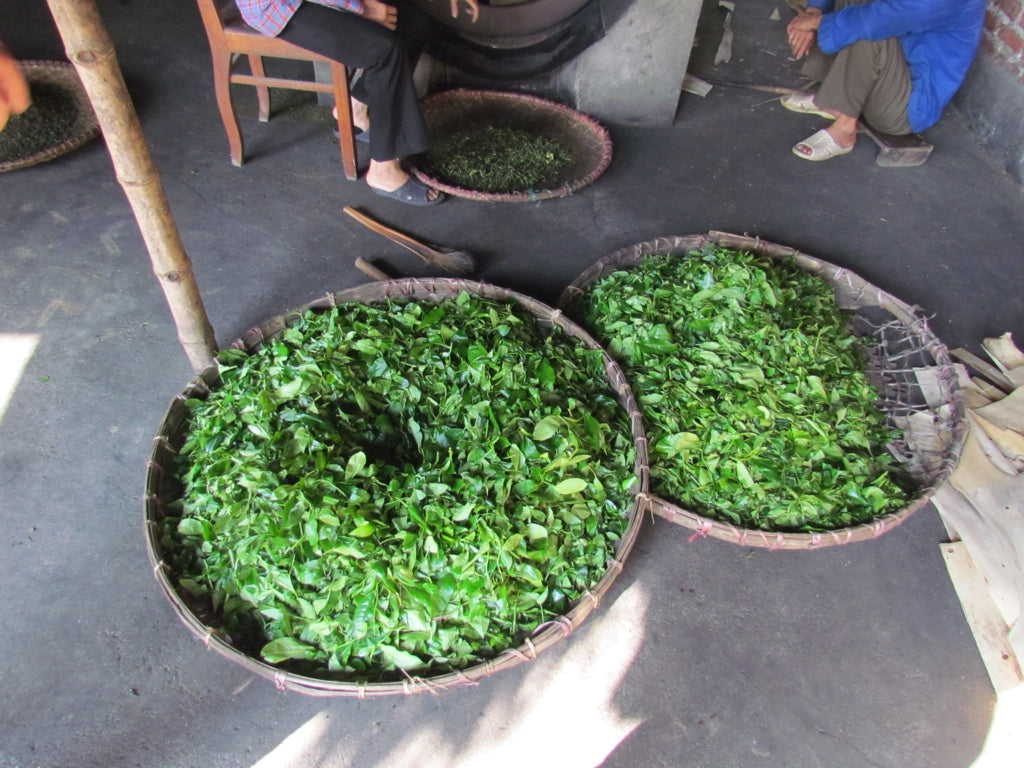News
-
The art of tea blending
Read more →Blending. Maybe the most critical tea skill. Only a select few are truly expert tea blenders. Most so called blenders I have known during my many years in the industry are just following laid down blend formulas. Of all the tea tasters I have known, my old mate Phil Moody is one of the very best. A passionate tea expert...taster. I was surfing though YouTube and came across this video all about tea blending. From the Lipton tea site. It is a great 5 minute clip. It is a good summary. https://www.youtube.com/watch?v=CezYHsqzW0w
-
Hot summer.... time for iced tea
Read more →In the southern USA iced tea is a hugely popular drink. In fact 85% of tea drunk in the USA is iced. I've never figured out why we in Australia haven't taken to iced tea in a big way. The British influence maybe?Right now is a perfect time to make a jug of iced tea as the mercury climbs to 40 degrees C tomorrow in much of Australia.Easiest way to make iced tea ?Make a mug of concentrated tea - add 4 or 5 tea spoons of tea to a mug, then nfuse with boiling water for 2 or 3...
-
Myths about tea leaf appearance...and CTC tea
Read more →It has been great witnessing the rise of tea - premium tea - in the western world these last 10 years or so. Having started in the tea industry in 1980, I only wish this 'born again' tea thing had happened earlier. But I'm not complaining. Wonderful to see people trying all types of tea, from every corner of the globe. Even non Camellia Sinensis teas, like Rooibos. In the 1980's my old company, Lipton, was selling a lot of this in South Africa. But none of my non Southern Africa friends had heard of it. Now it seems to...
-
Black tea - how to enjoy it at its best
Read more →My last blog emphasised the crux of getting green tea right. Basically all about the brewing temperature. And starting with good green tea leaves ! The common green tea failing in the West is using boiling water, like when we prepare black tea. Big mistake.Anyway, today I want to talk about black tea. How can one enjoy this drink to the max ? Black tea has dominated Western tea drinking since the commercial Indian tea industry took root in the 1840’s. So lets get black tea preparation - and drinking - optimised.What’s critical ? Temperature. And good tea leaves. Same...
-
Tea quote this week:
Read more →“I say let the world go to hell, but I should always have my tea.” Fyodor Dostoyevsky 'Notes from Underground'
-
Green tea - tastes bitter ? It's all in the brewing temperature.
Read more →There has been so much spoken about green tea in the western world these past 10 years. Antioxidant boosters. Slimming teas. Many claims. Mostly very dubious. Many simply untrue. Snake oil salesmen like in the Wild West ! Green teas are delicious. Extremely varied. Healthy. Hydrating. Refreshing. A great addition to your tea range. But be selective. Poor green teas are.... poor ! They're plain. And yucky - to use a technical term. Green tea in the west is usually very ordinary - and I am being kind ! The quality (sic) of much of the green tea sold by...

